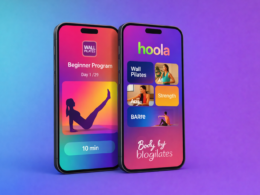In the ever-evolving world of educational technology, developing an effective and engaging educational app is a key strategy to enhance learning experiences and improve educational outcomes. With the proliferation of smartphones and tablets, educational apps have become increasingly popular tools for both teachers and students. In this guide, we will walk you through the essential steps and considerations how to make educational apps that stands out in the crowded app market.
Understanding the Purpose and Audience of Your Educational App
Identifying the Educational Needs
The first step in developing an educational app is to identify the educational needs that your app aims to address. Whether it’s for K-12 students, college learners, or professional development, understanding the specific educational gaps or challenges will help tailor the app’s content and functionality. Conduct thorough research to understand the needs of your target audience, including their learning styles, preferences, and technological comfort levels.
Defining Your Target Audience
Once you have a clear understanding of the educational needs, it’s crucial to define your target audience. Are you developing the app for young children, teenagers, college students, or adult learners? Each demographic will have different requirements in terms of content, user interface, and overall design. For instance, an app for preschoolers will need to be visually engaging and simple to navigate, while an app for college students might focus more on providing in-depth resources and analytical tools.
Designing User-Centric Educational Content
Creating Engaging and Interactive Content
Engagement is key in educational apps. To keep users interested and motivated, the content must be interactive and engaging. This can be achieved through:
- Multimedia Elements: Incorporate videos, animations, and audio to explain complex concepts.
- Interactive Quizzes and Exercises: Provide immediate feedback through quizzes and exercises to reinforce learning.
- Gamification: Use game-like elements such as points, badges, and leaderboards to encourage continuous learning.
Aligning Content with Educational Standards
Ensure that the app’s content aligns with educational standards and curricula. This alignment ensures that the material is relevant and useful in a formal educational context. Collaborate with educators and curriculum experts to design content that not only meets but exceeds educational standards.
Personalizing Learning Experiences
Personalization enhances the effectiveness of learning. By leveraging adaptive learning technologies, your app can tailor content to the individual learner’s pace and level of understanding. Features such as progress tracking, personalized recommendations, and customizable learning paths can significantly improve user engagement and outcomes.
User Experience (UX) and Interface Design
Intuitive and Accessible Design
A successful educational app must have an intuitive and accessible design. The user interface should be simple and easy to navigate, allowing users to focus on learning rather than figuring out how the app works. Consider the following design principles:
- Minimalist Design: Keep the interface clean and clutter-free.
- Consistent Navigation: Use familiar icons and navigation patterns to make the app user-friendly.
- Accessibility: Ensure the app is accessible to users with disabilities by incorporating features such as screen readers, high-contrast modes, and text resizing options.
Responsive Design
With the variety of devices available, it is essential that your educational app is designed to be responsive. It should function seamlessly on smartphones, tablets, and desktops, providing a consistent user experience across different screen sizes and resolutions.
Conclusion
Creating educational apps is a dynamic process that requires understanding user needs, designing engaging content, and ensuring accessibility. By following best practices and leveraging technology, you can develop impactful apps that enhance learning experiences for diverse audiences












